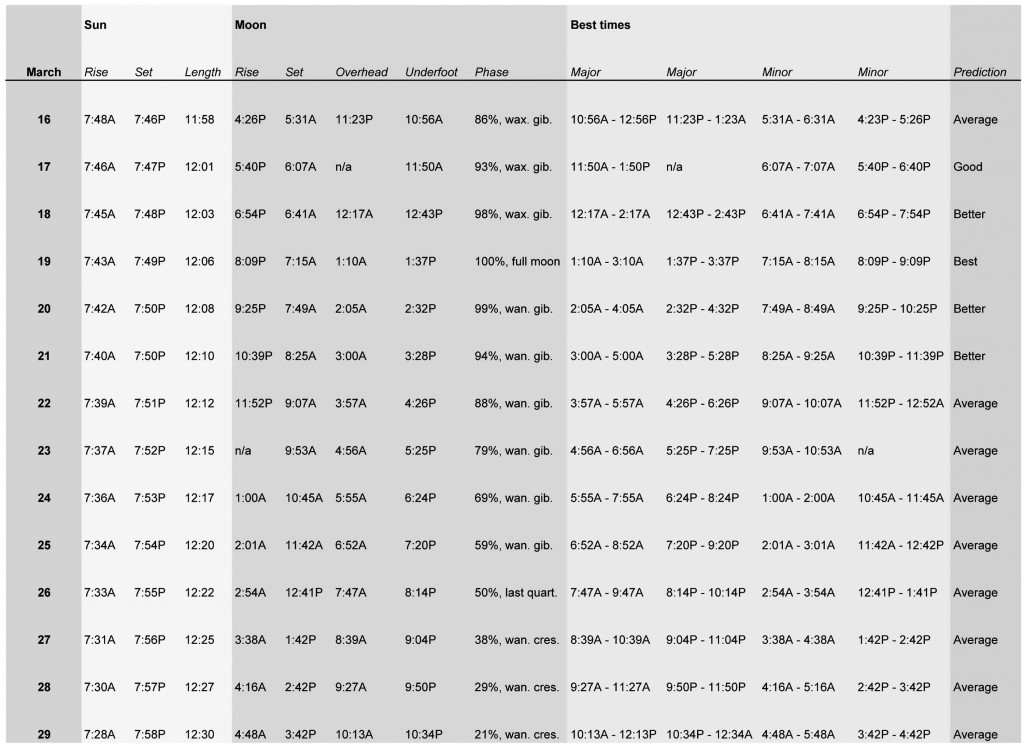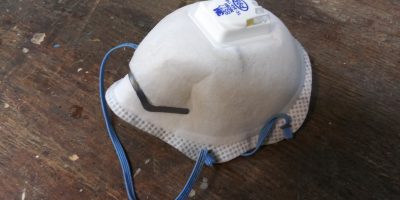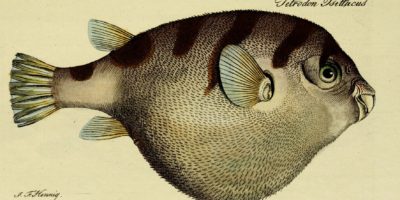Shootin’ n Snaggin’ with the Frugal Fisherman
If there’s a single question that enters every fisherman’s mind at one time or another, it’s when to fish. Should it be early in the morning, just before dusk or somewhere in between? The reality is there’s no easy answer, no wondrous instant when all fish gather to feed.
In fact hundreds of variables affect fish feeding patterns from moment to moment. Everything from weather, to water temperature and clarity, to the season, to fish cover. Even the amount of shade and food available influences when and how fish decide to dine.
But there are a few tools and tried and true methods that can greatly increase the chance of a strike regardless of time. One doesn’t have to be rocket scientist to be observant and use what’s at hand to increase the number of fish in the basket.
It’s a gross understatement to say fishing has come a long way since the bygone days of old when a can of worms and a pole were all any fisherman needed or required to be cutting edge. The modern fisherman has a myriad of equipment and tools available to increase their chances of a great catch. GPS, fish finders and temperature gages, as well as maps and water level data enhance the fishing experience. But for the average angler who doesn’t have the money or time to make long term technological investments, there’s still viable ways to up the ante.
As I said earlier, one of the most important tools any fishermen can use is the power of observation. It sounds overly simple but using one’s eyes is an often overlooked tool in the angler’s tackle box. Every fisherman at one time or another has been so excited about being on the water that they fail to take a deep breath and see what’s happening around them before heaving a lure at a sunken log.
A good rule of thumb is to approach each outing like it’s your first. Even if you’ve fished the same stump, rock bar, creek bed or body of water the same way a thousand times with numerous success, it never hurts to take a quick minute or two to sit quietly in the boat or on the shore and watch the water. If nothing else it allows one to focus their energy and mind on the task at hand. And you just might be surprised but what you see.
Look in every direction and target key cover that fish could be holding on. Even a freshman fisherman can usually eliminate several areas based on this generalized examination alone. Once the target areas have been noted fish those areas in all directions, making sure to work the cover fully. There have been numerous times fisherman (myself included) have given up on a great spot after a cast or two. The key here is to be patient and thorough. More times than not the effort will be rewarded.
While observing, note also if there are active baitfish, insects on the water or splashing by fish feeding in the area. If you note any, check the spot out more closely. Even if the baitfish are scattered by your observation, they’ll soon reschool and what you learn could be invaluable. Watch the baitfish closely and note how they react and swim. Then try and simulate this pattern by selecting a lure to imitate the size and color of the bait. Also work the bait as close as possible to the way the baitfish are swimming. The key here is to imitate what you see in nature.
A great tip is to work your lure all around the jumping and scattering baitfish. Try casting into the school, around the edges, out in front and even behind the baitfish. And vary the rate and configuration of each returned cast. By all means begin by simulating the pattern observed earlier. But if that doesn’t induce a strike try retrieving the lure quickly, then slowly. Even allowing the bait to fall naturally like a wounded shad or minnow can be the small variation that could drive a fish to pounce. Once again be patient here and work the baitfish thoroughly.
If insect feeding is noted, try and get your hands on one of those delectable bugs. Observe its size and color just like with the baitfish. More times than not, except when trout fishing, there won’t be a lure in your tackle box that exactly imitates the insect in hand. But find the closest match and at the very least imitate the pattern. A great tool here is to use a popper of similar color and size, or even a floating Rapala or crank bait, to get some surface activity induced. Often just breaking the water’s surface and creating a commotion can be the difference between a strike or nothing at all. A beetlespin or spinner bait of similar color is another twist that can incite feeding. As always stay patient, this pattern can be tough, so don’t get too discouraged if nothing happens.
A great time for insect activity is early in the morning and late in the evening. Bugs warm up in the sun and start to move early or are making their way to trees and branches late in the evening, many of which find their way to flopping and crawling about on the water’s surface. Baitfish are most active early and late as well.
It’s never a bad idea to get on the water early and leave late, but if you can only pick one or the other make sure to allow plenty of time to get situated before the sun rises or sets. As stated prior it will only help increase your catch if you take a few minutes to observe the water. So plan accordingly.
The last suggestion for improving one’s catch is to follow a solunar table. Solunar tables are easily found using a general web search and can be invaluable in determining when fish, including bait, are likely to be most active throughout any given day. Solunar tables are based upon solunar theory — when and how baitfish move according to the location of the moon in relation to their bodies.
For fishermen, knowing the tides and sunrise and sunset periods of each day is helpful in calculating when fish are more likely to bite. Other conditions not being unfavorable, fish will feed, animals will move about, birds will sing and fly from place to place. In fact, all living things will become more active, more alive, during solunar periods. Those anglers who have had the breadth of vision to follow the schedule, have found that it is a useful guide to the best fishing periods of each day. The quality of their outing can be vastly improved.
Using these tables, a fisherman can tell when the moon is directly underfoot or overhead. The strongest fishing activity occurs when there is a full moon or a new moon and is weakest when there is a quarter moon and a three quarter moon. This is because the moon and sun’s gravitational force is strongest when directly above or directly below one’s head.
Even though most humans may remain unaware of these natural nuances, fish are keenly aware of every moment in nature. For a bass, crappie or walleye, these solunar peak times can be the difference between eating and going hungry. Look at the solunar table provided and note the data presented. It gives sunrise and sunset times, day length, moon data and phase, major and minor times to fish, and the overall prediction for that day.
The average fisherman should be able to make more of each outing using the general techniques described above combined with the data in the solunar table. If nothing else one should feel more prepared and knowledgeable of the day’s events and surroundings. Remember be patient, observant and diligent. And don’t be surprised when there are more fish in the well at the end of the day because you came to the water a little more prepared and focused this time around.








Leave a Reply